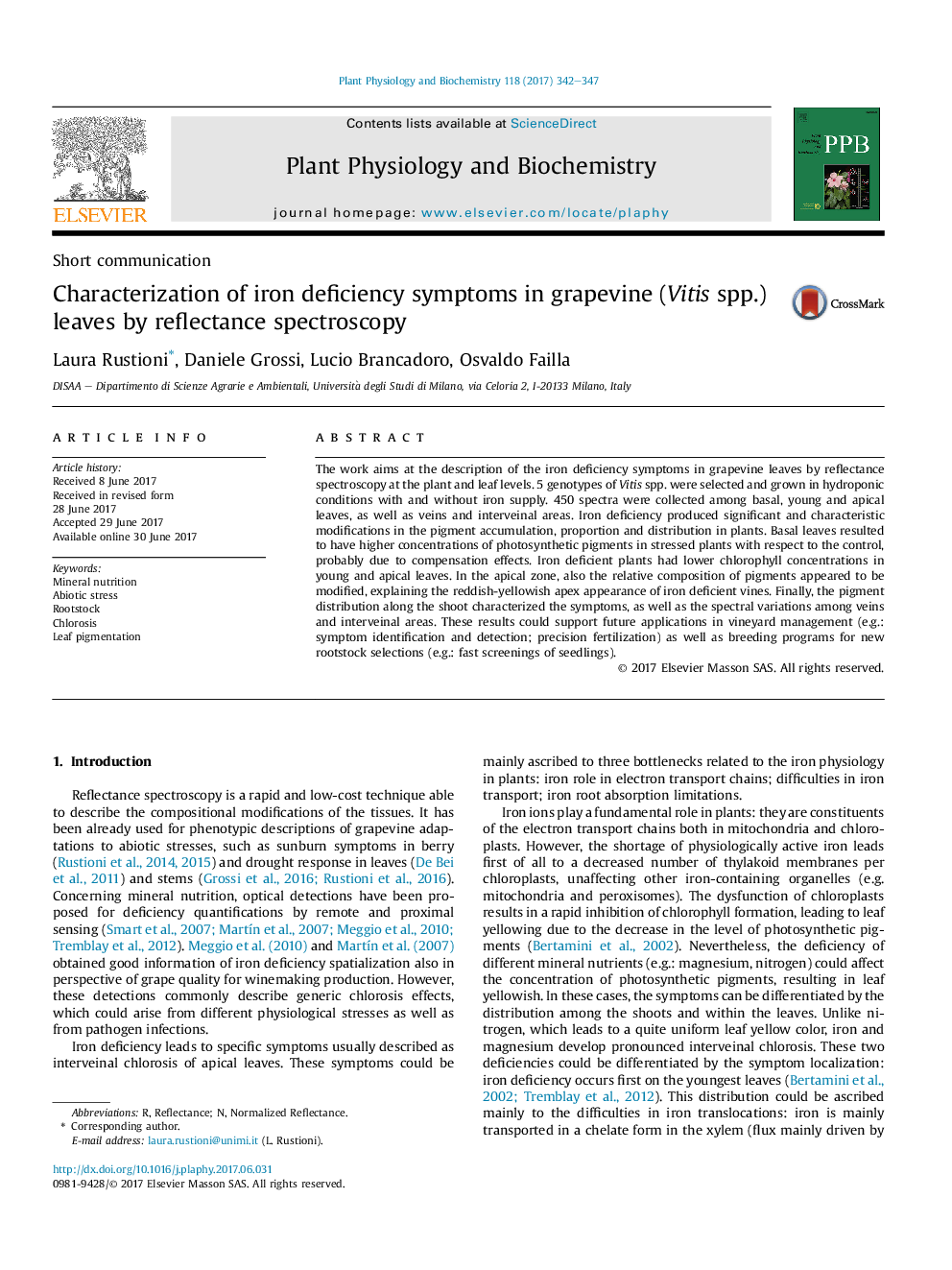| Article ID | Journal | Published Year | Pages | File Type |
|---|---|---|---|---|
| 5515449 | Plant Physiology and Biochemistry | 2017 | 6 Pages |
â¢Iron deficiency in grapevine leaves was described by reflectance spectroscopy.â¢Collected spectra included basal/young/apical leaves; veins/interveinal areas.â¢Pigment accumulation, proportion and distribution were affected by iron deficiency.â¢A compensation effect in photosynthetic pigments in basal leaves was observed.â¢These results will support future applications in viticulture.
The work aims at the description of the iron deficiency symptoms in grapevine leaves by reflectance spectroscopy at the plant and leaf levels. 5 genotypes of Vitis spp. were selected and grown in hydroponic conditions with and without iron supply. 450 spectra were collected among basal, young and apical leaves, as well as veins and interveinal areas. Iron deficiency produced significant and characteristic modifications in the pigment accumulation, proportion and distribution in plants. Basal leaves resulted to have higher concentrations of photosynthetic pigments in stressed plants with respect to the control, probably due to compensation effects. Iron deficient plants had lower chlorophyll concentrations in young and apical leaves. In the apical zone, also the relative composition of pigments appeared to be modified, explaining the reddish-yellowish apex appearance of iron deficient vines. Finally, the pigment distribution along the shoot characterized the symptoms, as well as the spectral variations among veins and interveinal areas. These results could support future applications in vineyard management (e.g.: symptom identification and detection; precision fertilization) as well as breeding programs for new rootstock selections (e.g.: fast screenings of seedlings).
